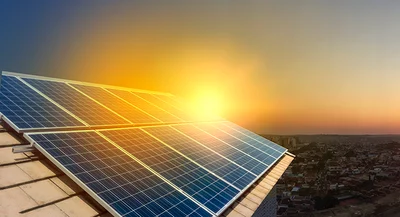Powering the future

Grid-size solar farms have become more economically viable over the last few years setting the scene for solar energy to take off. Solar will be part of the power mix and future of Mid Canterbury and New Zealand as more grid-scale solar farms are planned, consented and developed.
Solar energy is a sustainable power solution for Mid Canterbury and a potential for farmers to diversify their income.
There are two large-scale solar farms planned for the Ashburton District to boost the renewable energy mix in the district.
Construction is underway on a 93-hectare farm in Lauriston while work on a 35-hectare farm near Mount Somers due to begin before the end of the year.
Electricity Ashburton (EA) Networks’ network general manager Peter Armstrong said Mid Canterbury was well positioned to take advantage of solar generation as large-scale solar farms become more economical and affordable.
"Solar generation is the way of the future"... especially as the cost for grid-scale farms continues to improve and becomes more affordable, like wind power.
While the district did not have the best solar resource in the country, the sunshine hours came "pretty close" to being among the best, Armstrong said.
Mid Canterbury's flat land made it both easier and cheaper to build solar farms.
Connecting power to Electricity Ashburton's existing grid was also more affordable than in other rural areas.
The distribution network had been built for the high demand of irrigation and the capacity to take on solar power "was already there".
This meant it was relatively affordable to connect solar power and export a bit of the power, Armstrong said.
If the panels are built high enough, there is the option to use less productive land for solar and have animals, usually sheep, graze below them.
One of the advantages of solar generation for Mid Canterbury is that solar farms' peak production in summer would coincide with the peak demand on hot days during summer when farmers needed to irrigate and dairy farms had the chillers running.
However, Mid Canterbury would benefit from a mix of renewable power, he said.
Solar power ramped up in the morning and had a steep ramp-off in the evening which meant solar would not meet the early evening 6pm demand in winter.
"We need other power generation" or an investment in batteries to store solar power and shift the generation.
Armstrong said solar power generation was predictable over the longer-term but could not be predicted on a day-to-day basis.
"On a rainy day the power generated would be virtually zero."
The addition of solar to the network would not be without its challenges, Armstrong said.
One of these is the potential for solar farms to trip the network. Farms would need to be able to dampen their capability for periods if the network went down.
Mid Canterbury's first large-scale solar farm in Lauriston, a joint venture between Genesis Energy and FRV Australia, will install about 80,000 solar panels is expected to supply renewable energy to the grid before the end of 2024.
Genesis Energy’s chief wholesale officer, Tracey Hickman, said it was an important milestone for the company and the country.
“Solar has a clear role to play in New Zealand’s energy transition as a renewable source of generation" and would help manage dry years when hydro levels were low or the wind wasn't blowing.
The Lauriston site would provide cleaner energy and reduce the company's emissions from power generation portfolio. It is designed for dual use with sheep grazing beneath the solar panels and is one of the largest solar farm in New Zealand to start construction.
Once operational it will generate enough renewable energy to power 13,000 houses
A second smaller site on Tramway Road in Mount Somers is part of Lodestone Energy's plans to diversify its solar supply, with two other sites planned for Canterbury - one in Dunsandel and the other in Clandeboye near Temuka.
Lodestone has partnered with HES Aotearoa Limited which has consents from the Ashburton District Council and Environment Canterbury to convert a 35-hectare area of relatively unproductive farmland to solar power generation, with sheep grazing under the solar panels.
Apart from the three Canterbury farms, Loadstone has plans to develop another six solar grid-scale farms across New Zealand.
Lodestone Energy managing director Gary Holden the company's plans put it one step closer to bringing grid-scale solar to customers in all regions of New Zealand.
The company's first solar generation site in Kaitaia started supplying power to the grid in November last year.
Apart from the daytime and seasonal limitations of solar power, agrivoltaics - the combination of solar generation and farming either crops or livestock below the solar panels - does have a few drawbacks or unknown factors.
According to a 2023 report for Our Land and Water Rural Professionals Fund, agrivoltaics has the potential to increase the productivity of land, generate renewable energy without displacing food production, and potentially optimise farming and environmental outcomes.
The report prepared by Tambo, the Victoria University of Wellington and Infratec, found that the shade from the solar panels would mitigate heat stress risk and provide shelter from severe weather for livestock. But lifting the panels high enough to accommodate cattle came with increased costs, the risk of damage from larger livestock and increased exposure to wind shear issues.
The authors said solar panels could be recycled when they reached the end of their life but the technology was not available in New Zealand did would require investment and legislation to ensure no long-term environmental harm.
The impacts of agrivoltaics on crops and pasture in New Zealand was also largely unknown, including long-term risks, such as leaching from the panels the report said.
By Sharon Davis

